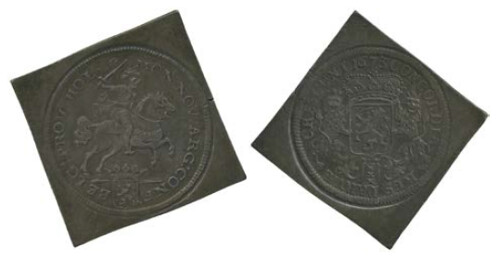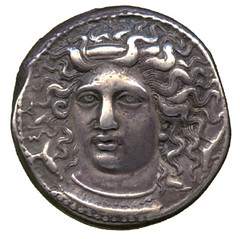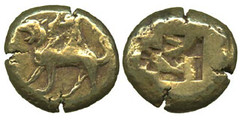
PREV ARTICLE
NEXT ARTICLE
FULL ISSUE
PREV FULL ISSUE
BALDWIN'S 2013 NEW YORK SALE
Caroline Newton of Baldwin's forwarded a press release about the firm's upcoming New York sale. Here are some excerpts.
-Editor
2013 will see The New York Sale group celebrate fifteen years of auctions at The New York Coin Convention and these, their 30th and 31st auctions at the event, promise not to disappoint. In keeping with tradition the first day of the two-day event will contain an exciting array of ancient and world coins, including a number of spectacular collections of ancient Greek coins and a fantastic group of over fifty Islamic rarities. Day-two will, as usual, include a plethora of fascinating Russian coins, orders and medals to excite and entice both dealers and collectors alike.
The reverse of the coin is full of animation and energy, with a quadriga viewed in three-quarter perspective. The horses are rearing and tossing their heads in the heat of the moment as they speed towards their point of victory. This issue is without doubt one of Kimon’s greatest achievements and the most important of the late fifth century B.C. In addition to this many works of the famous die engravers prevalent in Sicily during the late 5th century B.C. are represented in this collection. All of the coins have prior provenance to Swiss or London auctions and trade. The lot is estimated to sell for US$100,000.
The second of the two staters an Electrum Stater from the Thraco-Macedonian Region, possibly the Orreskioi, appears to be lacking a direct comparison in the published numismatic literature. The closest parallel is an electrum stater in the British Museum collection, of a similar type, but of a wholly different style and execution. The above coin has been compared with that stater, identified as Orreskioi (?). The obverse of the British Museum’s coin is inferior in terms of both style and execution, displaying a distinct lack of detail when compared with the above coin. The fabric and production of the Museum’s example is also very different, suggesting it is somewhat earlier; the reverse of the above coin displays a much shallower incuse square, which has been neatly divided into four parts corresponding to other Thraco-Macedonian issues of the early fifth century B.C. This excessively rare coin is estimated at US$180,000. The world coin section, to be held on the first day of the auction, holds yet more excitement with a large offering of Islamic coins. Of the fifty five lots being sold there are two coins that stand out above all others. The first, an al-Walid I, Silver Dirham, al-Daybul 95h (713AD) is an excessively rare piece and is the earliest Islamic coin from the Punjab and the eastern most Umayyad mint. It is estimated to sell for US$15,000. The second is a very fine and extremely rare Silver Dirham, Sijistan 132h (749AD.) The coin is an exceptional item and is an unpublished type, not recorded in any of the standard reference works. The coin is estimated at US$25,000 but it is anticipated that it will achieve more.

A fantastic 1673 Amsterdam quadruple Taler Klippe (pictured here) is one of the other most notable coins to be included in the world coin section. In early 1672, King Louis XIV of France declared war on the United Provinces, a conflict which lasted for seven years. Arms and ammunition had to be purchased, so the estates of Holland appealed to the rich citizens to hand in their silver so that it could be minted into coins. As there was great urgency, a mint was opened in a disused tower in Amsterdam. 25 workers were hired and the mintmaster from Enkhuysen was asked to supervise the minting. According to Brause-Mansfield, the whole operation was so well organised that within ten months, five million speciethalers were minted. They are considered emergency coins as they were minted from silver supplied by the population. The Klippe Thalers, of which this unique specimen is the heaviest known, were part of the coin issue of 1673 and were probably presentation pieces. The spectacular example is about uncirculated, unpublished and unique and therefore carries an estimate of US$70,000. Day two will see the usual annual offering of important Russian coins, historical and award medals. There will be around 800 lots in total including a collection of Imperial Russian Orders and Medals and Russian Civil War and Émigré items as well as a major collection of early Soviet Republican Orders, other important USSR Orders and Badges. More details of the items will be available closer to the auction and all the items from the Russian part of the auction will be available that items to view at Baldwin's London office during and after Russian Art week in, November 26 - December 16, 2012.
The catalogues for both auctions will be available from the Baldwin’s website at
www.baldwin.co.uk from the first weekend in December.
The Numismatic Bibliomania Society is a non-profit organization promoting numismatic literature. See our web site at coinbooks.org. To submit items for publication in The E-Sylum, write to the Editor at this address: whomren@gmail.com To subscribe go to: https://my.binhost.com/lists/listinfo/esylum All Rights Reserved. NBS Home Page Contact the NBS webmaster 
|

